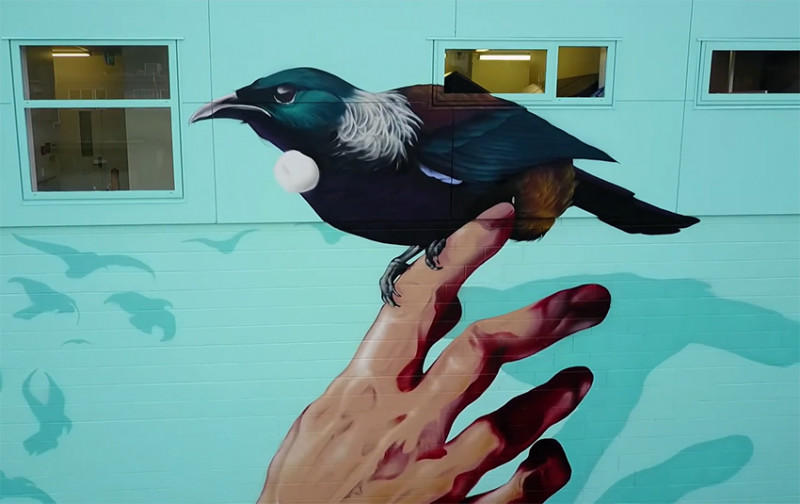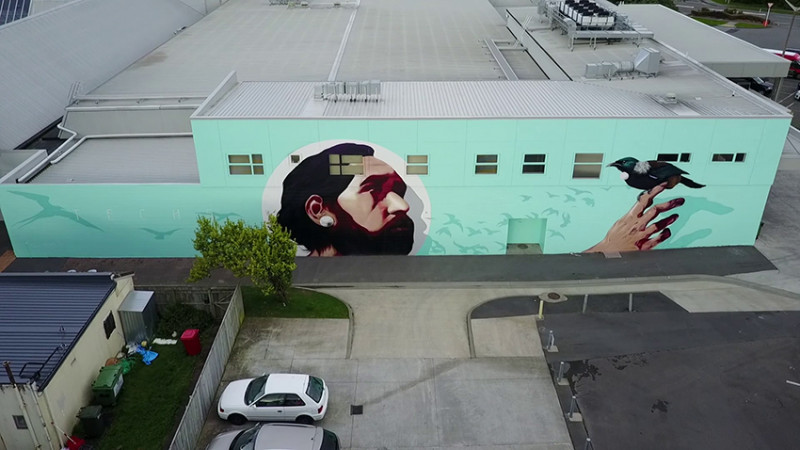
The Bird Sanctuary by Poi ‘TECHS’ Ngawati

Street art: Tane Te Ohanga – The Bird Sanctuary by Sam Hollis
We chat to street artist Poi ‘TECHS’ Ngawati about his iconic mural in Tawa.
As its title suggests, you wanted this mural to represent the personification of a bird sanctuary. How have you tried to express that in the design?
The purpose was to link the public viewing the mural with the idea that everyone has the potential and power to become a kaitiaki (guardian) of all the native birds in the area. The scale of the portrait is symbolic for the size of an actual bird terrarium, however, the viewing public can also establish a connection to the portrait due to its human-like features. This creates a link between the purpose of a sanctuary that looks after these birds and each individual that views the mural. The underlying concept is that you don’t have to be superhuman to look after these birds, every individual has the potential to make a difference.
What was your process for this design, how did it develop or change, and what challenges did it present?
The process from start to finish was tedious, however necessary. Initial brainstorming and concept designs were based on the town’s history and current status. The conclusion from the information gathered was to acknowledge the increasing numbers of native birds in the area. Although the task to paint native birds would be easy, the challenge was to incorporate the message that every individual has the potential to make a difference, so from here I needed to establish a link with the viewer and the painting. This was achieved by incorporating a human figure.
What message or perspective should viewers take away from Tane Te Ohanga – The Bird Sanctuary?
I simply wanted to get the viewer to imagine their own face painted on the wall and link themselves with the narrative of the painting. Ultimately these birds are a part of the identity of Aotearoa and our link to the past.
There is a massive amount of variety in your works – some are detailed and photographic like this, others embrace traditional graffiti typography. How have you nurtured these different styles?
As an artist and graphic designer, these two disciplines simultaneously complement and collide with each other, thus creating the aesthetics I paint in the murals. The level of freedom in fine art contrasts with the structured and rigid layout of graphic design. Within my paintings, I aim to play with the combination and integrate the aesthetically pleasing features of the two disciplines.
In what ways do you try to incorporate your heritage into your work? Why is this important to you?
The way that I introduce my cultural heritage into the paintings is sometimes through subject matter and the traditional narrative behind the painting. Māori was once an oral-based culture, meaning knowledge was handed down through song, karakia, and stories. This is important to me because I believe if ancient knowledge – such as traditional navigation and lunar cycles – can transcend time, then I want to do my part as Māori to ensure that this knowledge continues to the future generations to come.
View more articles from:
« Issue 135, September 29, 2020

